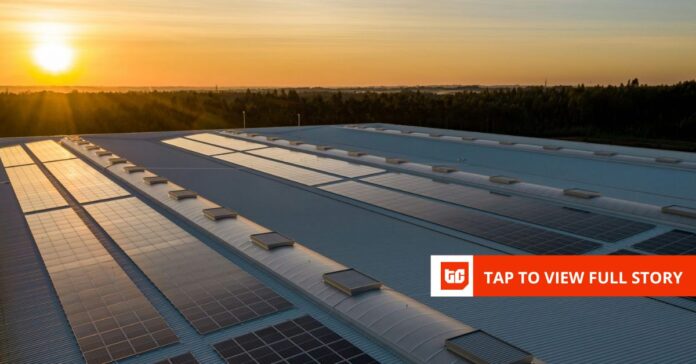This article was written by Addaya rainis an Associate Consultant at TechCabal Insights.
Africa is at a critical moment in its energy development. The continent is experiencing a surge in renewable energy investments which has risen from $2.6 billion in 2021 to an estimate $40 billion in 2024. Africa’s renewable-energy investments are only 3% the global clean-energy flows despite having 19-20% or the world’s total population and an immense renewable potential . Africa faces a clean energy investment gap of about 60 billiondollars based on 2024 flows (40 billion dollars), compared to the 100 billion dollarsrequired annually to reach the continent’s target of 300 GW by 2030. This investment boom has allowed for the development of impressive projects across the continent.
The 580 MW Noor Solar Plant in Morocco spans 3,500 football fields of Sahara. Kenya’s 310 MW Lake Turkana Wind Farm generates 17% of Kenya’s installed capacity. Egypt’s massive 1.8 GW Benban Solar Park
Despite the influx of investment, inefficiency remains a problem. Bureaucratic delays, grid constraints and other factors can slow down project execution. Some developments face regulatory setbacks of 12-18 months before they are implemented. Solar dominates Africa’s renewable energy investments by 2024
Africa’s renewable energy investment landscape reveals a significant technology imbalance. Solar PV dominates the renewable energy funding in Africa, according to the World Energy Investment 2024 Report by International Energy Agency and IRENA’s Renewable Energy Transition in Africa Study. Solar PV accounts for 62% of all renewable funding, with a split between utility-scale installations (40%) and distribution (22%) systems. Wind energy only receives 16% of the investment despite Africa’s abundant wind resources. Bioenergy (12%), small hydro (10%) and other renewables complete the portfolio. While Africa’s solar irradiation is a major asset, the overwhelming focus on solar hides critical gaps in its renewable diversification strategy. Beyond institutional investments private equity and venture-backed Renewables have emerged as critical drivers for Africa’s energy transformation. The continent’s private-equity market is expected to reach ahref=””https://www.africanexponent.com/top-10-sectors-and-investment-hotspots-for-private-equity-in-africa-2025/#:~:text=In2025%2CAfrica%27sprivateequitymarketisprojectedtoreachUS%24900.80millionindealvalue%2CwithanaveragedealsizeofUS%249.84millionand91.54deals.” “rel=””noreferrer noopener””target=””_blank” “>$900 millions by 2025. Investors will prioritise solar and wind startups, using innovative financing mechanisms, such as blended financing and risk-sharing.
A persistent energy access gap.
Investment surges are in stark contrast to the reality of hundreds and millions of Africans. Over 600 million people in Africa, or roughly 43%, lack electricity. Reliability is a constant challenge for those who have grid connections. Many African countries experience frequent power outages and load-shedding, with households and businesses often experiencing daily disruptions that last for hours. The economic impact can be significant. According to one study, outages and failing utilities can cost national economies as much as 4% annually. This stark disconnect between increasing investment and persistent energy poverty raises important questions about the nature of Africa’s transition to energy.
ALSO READS: Africa’s climate tech sector must have winners to justify the recent funding jump.
Job and growth potential.
A huge opportunity has been missed. Investment in renewables generates three times as many jobs per dollar as the same expenditure on fossil fuels. Models suggest that Africa could add 14 million jobs in 2030 if it increased its clean energy. Under current investment trends however, this job creation growth opportunity could be lost as millions of green jobs may never materialise.
Vulnerability to climate change
Africa is also at the forefront of climate risk. The world’s climate-vulnerable nations include many African countries, so delays in the deployment of clean power compound the issue. UNEP estimates that the cost of adaptation alone could reach ahref=””https://www.afdb.org/en/cop25/climate-change-africa#:~:text=UNEP,within2%C2%B0Cabovepreindustriallevels” “rel=””noreferrer noopener””target=””_blank” “>$50billion per year in 2050, even under a scenario of 2 degC global warming. Underinvesting in clean energies now will result in a much higher “climate tax” for African economies later.
Summary
As Africa continues attracting record levels of renewable energy investments, the challenge is to ensure that the growing capital flow translates into meaningful energy access for hundreds of millions of people who still lack basic electricity services. The true measure of success won’t be found in headline figures or megawatts additions alone. The true measure of success will be the number of homes that are illuminated, businesses that are empowered, improvements to healthcare services and economic opportunities.
To fully realise Africa’s renewable energy potential, investments must not only increase but also diversify both in terms of technology mix and geographical distribution. Only then will the continent be able to transform its energy paradox into a sustainable and equitable energy future. Explore our dashboard to track African exits and purchases in energy and related sectors


